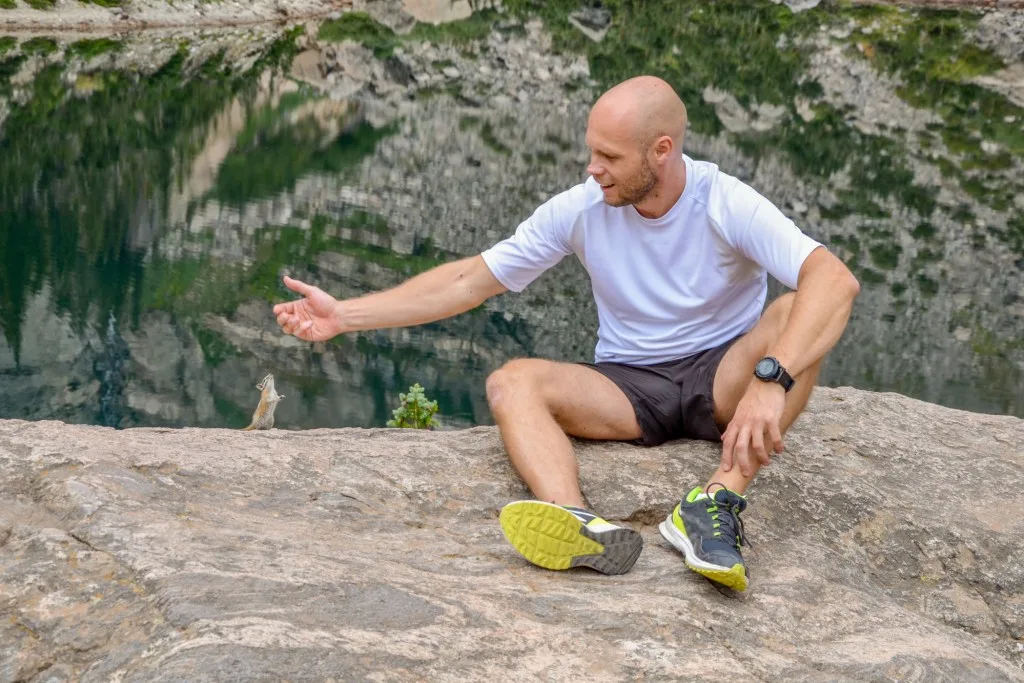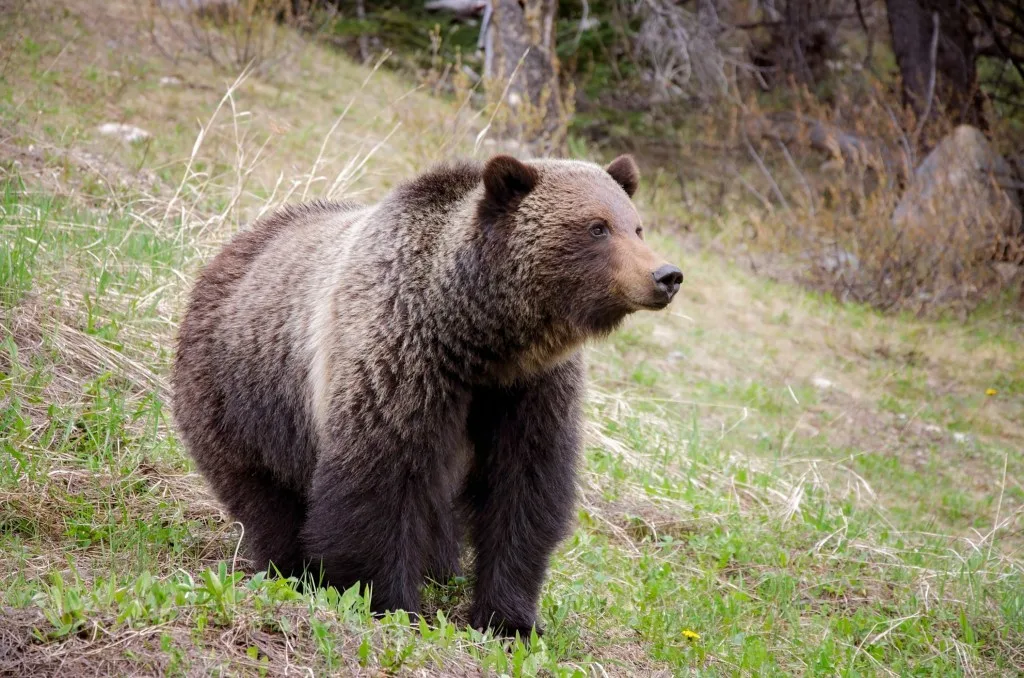One of the best things about the great outdoors is the chance to see wildlife up close. Not too close, though.
Each region of the country has different species of wild animals.
We’ll let you know what to expect on your visit to the Rocky Mountains and how to keep your encounters safe.
Here are the most dangerous creatures to look out for.
What Makes a Creature Dangerous?
Very few animals, even the most fearsome predators, set out to harm human beings. They pretty much have a live-and-let-live attitude until you threaten them in some way. Animals react differently when you get too close.
They may lash out if you pose a danger to them, their young, or their habitat. Some animals may ward off intruders with a scary snarl, growl, hiss, or rattle. If you annoy them too much, you can wind up with a sting, bite, or something much worse.
Where Are the Rocky Mountains?
The Rocky Mountains, also called the Rockies, dominate much of the landscape of the western United States. It’s America’s largest and highest mountain range. It actually stretches some 3,000 miles from British Columbia to northern New Mexico.
Along the way, the mountains extend through Idaho, Wyoming, Montana, Utah, and Colorado. Millions of people visit the mountains every year in various federally protected parks and natural areas.
These include Rocky Mountain National Park, Yellowstone National Park, Grand Teton National Park, and Glacier National Park.
Pro Tip: Learn more about The History of Yellowstone National Park before you head to the Rockies.

The Most Dangerous Animals in the Rocky Mountains
Dozens of mammals, large and small, call the Rockies home. A few of these bigger ones pose the greatest danger.
Mountain Lions
Also called cougars and pumas, these big cats can weigh up to 800 lbs. They tend to travel solo, especially the males. You may see them stalking large prey like moose and elk.
However, attacks on people are rare, but they do happen, and they don’t always end well. If you encounter a mountain lion, act aggressively toward it rather than running. Make a lot of noise to scare it off.
Moose
These are the biggest members of the deer family and one of the largest animals in the Rocky Mountains. Fortunately, it’s usually easy to spot them because they tend to stay in groups. These creatures of habit generally feed in the same places every day.
Moose won’t fight you for food because they eat mostly vegetation. Moose can become aggressive in specific scenarios, like if they have a calf nearby. Dogs can also provoke them.
But what really makes them dangerous is their size and lack of fear of humans. You don’t want to mess with them because they weigh up to 1,500 lbs and have antlers. If you come across one, slowly back away and give them their space.
Pro Tip: The might look cute, but Are Moose Dangerous When You’re Camping? Check it out!
Black Bears
Grizzly bears only reside in the more northern reaches of the Rockie. However, the black bear, their smaller cousins, are more abundant. In bear areas, keep your food and trash locked away.
Unlike the moose, they’ll absolutely fight you over something to eat. Thankfully, bear attacks are rare and even less common among groups.
Wolves
Wolves are very good at avoiding contact with humans, so you’ll have a slim chance of seeing them. However, if you do encounter one, it’s likely a subspecies of the gray wolf called the northern Rocky Mountain wolf.
They mainly reside in Montana and Wyoming, but some have made their way south to Colorado.
Bison
Once upon a time, millions of these mammoth animals roamed the Great Plains in gigantic herds. However, they were down to just a few hundred animals by the late 1880s. Some mistake bison for buffalo, but they are two different animals.
Bison herd populations have taken an upswing because of concerted recovery efforts. Yellowstone has a herd numbering 5,450 at last count. Keep your distance — the males weigh up to a ton, and they can run as fast as 30 mph.
The Most Dangerous Reptiles in the Rocky Mountains
When visiting the Rockies, you might worry about things that slither, especially one venomous serpent in particular. You might hear this one before you see it — or you might not. This is the most dangerous reptile in the Rocky Mountains.
The Western Rattlesnake
Not all snakes are dangerous, but the western rattlesnake is. Their coloration can vary, but these pit vipers usually have light brown skin with darker diamond shapes on their backs. For this reason, people call them diamondbacks.
They eat birds, so you might see them on the branches of a tree or shrub, lying in wait for an unsuspecting victim. They also eat small mammals and amphibians. And yes, their venom in excess can also pose lethal to humans.
The Most Dangerous Creepy Crawlies in the Rocky Mountains
Sometimes you have to worry most about the itsy bitsy creatures. Keep a sharp eye out for these unwanted pests, as well.
Ticks
One of the problems with ticks is they’re so clingy. The other problems are more serious. These round, brown bugs can spread debilitating illnesses like Lyme disease and Rocky Mountain spotted fever. Check your skin for them carefully and often, and use tweezers to remove them.
Brown Recluse Spider
A bite from a brown recluse can cause nausea, fever, joint pain, and in some cases, seizures and long-term scarring. Study photos of them so you can learn to identify their violin-shaped bodies in the wild. They like to hide in dark spaces, so you can’t always see them easily.
Black Widow Spider
The black widow, another type of venomous spider, has a shiny black body with a distinctive red hourglass pattern on its abdomen. Black widows are more aggressive than the brown recluse, and they can leave you with burning, aching pains, and muscle cramps. They are about the size of a dime and have long legs.
Yellow Jackets
Sometimes even a bee sting can ruin your day, especially if you’re allergic. These little wasps with yellow and black markings are very combative, particularly when you get too close to their nest. For most people, the burning and itching goes away after an hour or two. In some cases, the pain can linger for days.

Are These Creatures Protected in the Rocky Mountains
Any camper knows there’s no shortage of ticks, but the federal government does work to protect species with dwindling populations. You won’t find any animals mentioned on the endangered or threatened list.
However, the gray wolf was endangered until recently. Additionally, the government protects all wildlife and habitats in any national or state park in the Rocky Mountains.
How to Stay Safe While in the Rocky Mountains
Seeing wild animals in their habitat is one of life’s great pleasures. But remember, it’s their home, and you’re just visiting. Here are some important things to help you stay safe in the Rocky Mountains.
Don’t Feed the Animals
Sometimes you’ll feel the urge to feed animals, especially when they approach looking all cute and hungry. But animals who get accustomed to handouts lose the ability to provide for themselves. And, quite literally, they may end up biting the hand that feeds them. Additionally, feeding a small animal can expose you to its predators.
Clean Up Your Campsite
One person’s garbage is another’s treasure. What seems like trash to you may be a gourmet meal for dangerous creatures. Keep your campsite orderly and free of anything that might attract them. This can include food, sweet-smelling toiletries, cosmetics, and household products. Also, take out your trash or place it in a bear-safe bin.
Keep Your Distance
Sure, you’ll want to get a picture, but use your zoom lens for safety. An animal won’t feel provoked or threatened if you give it enough space. A common rule of thumb is to stay 100 yards away from large animals and 25 yards from smaller ones.
Stay On Trail
You may want to explore wooded areas, but you’ll encounter more dangerous animals off the trail than on. And many of them have patterns and colors that act as camouflage, so you may not see them. You’ll likely pick up lots of those tiny ticks off the trail, too. Staying on the trail also protects these creatures’ habitats.
Know Before You Go
When planning a trip, know what to expect. This means getting a good heads-up on what potentially dangerous animals occupy the area. Being a good steward of the environment means showing a healthy respect for the animal kingdom. And it might help to keep you healthy, as well.
Have you had any dangerous run-ins with wild animals? Tell us about them in the comments below.
Discover the Best Free Camping Across the USA
To be honest with you, we hate paying for camping. There are so many free campsites in America (with complete privacy).
You should give it a try!
As a matter of fact, these free campsites are yours. Every time you pay federal taxes, you’re contributing to these lands.
Become a FREE CAMPING INSIDER and join the 100,000 campers that love to score the best site!
We’ll send you the 50 Best Free Campsites in the USA (one per state). Access the list by submitting your email below: